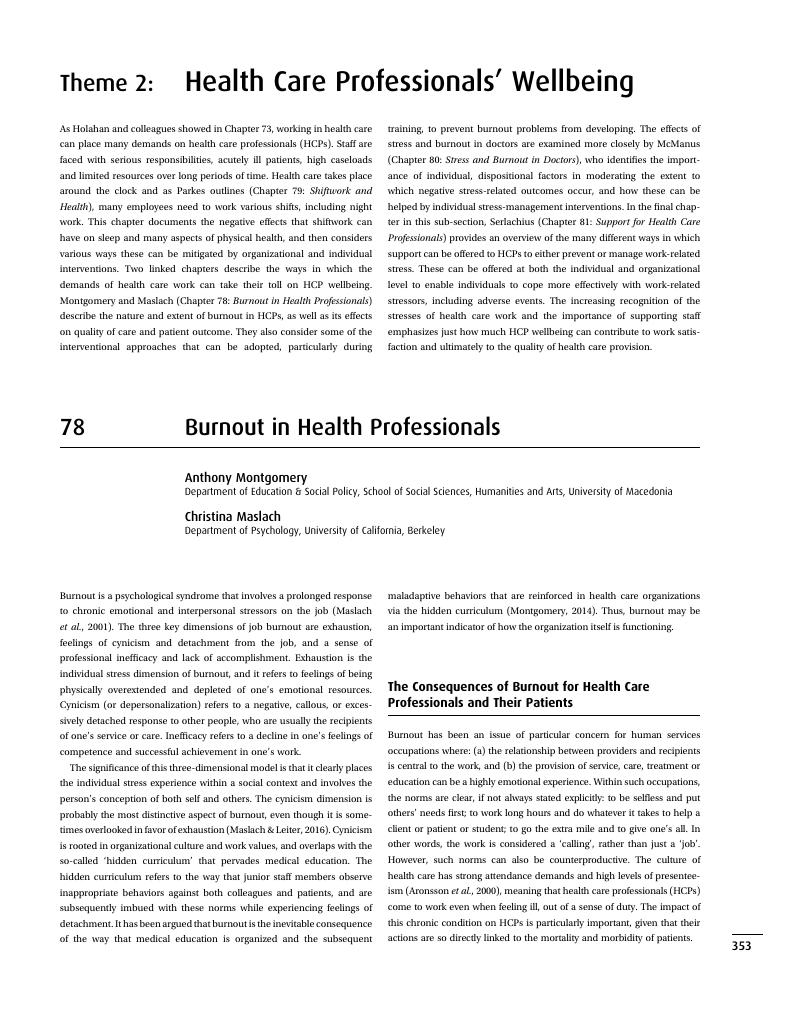78 - Burnout in Health Professionals
from Theme 2: - Health Care Professionals’ Wellbeing
Published online by Cambridge University Press: 05 June 2019
Summary

- Type
- Chapter
- Information
- Cambridge Handbook of Psychology, Health and Medicine , pp. 353 - 356Publisher: Cambridge University PressPrint publication year: 2019



